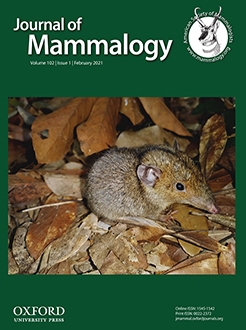Recent work on tropical montane small mammals and birds has shown that abundance–elevational range size relationships (i.e., the relationship between abundance of a species and its elevational range size) can be manifested in a number of distinct generalized patterns. To understand why different patterns occur, one first must understand the causal mechanisms behind patterns of interspecific variation in species abundance and elevational range size. Using small mammal data along five elevational gradients in Southwest China, we assessed the relative importance of body mass, niche position (i.e., how typical the environmental conditions in which a species occurs are of the full set of conditions under consideration) and niche breadth in explaining the interspecific variation in mean abundance of species of small mammals, and elevational range size. Niche position and niche breadth were calculated using outlying mean index analysis based on 24 environmental variables. The relative importance of body mass, niche position, and niche breadth, in explaining the mean abundance and elevational range size of species were examined using phylogenetic regression and phylogenetic path analyses. Along each of five elevational gradients, body mass maintained a nonsignificant (P > 0.05) relationship both with mean abundance and elevational range size when the effects of phylogeny were taken into account. Niche position had a negative effect on mean abundance and elevational range size (species with a niche position close to edge environmental conditions were rarer and had smaller elevational range sizes) across five gradients (significant negative effect: three gradients for mean abundance; five gradients for elevational range size). Conversely, a positive effect of niche breadth on mean abundance and elevational range size was observed consistently, yet the effect was significant only for some gradients (mean abundance: two gradients; elevational range size: four gradients). Our study suggests that niche position and niche breadth both are good predictors of abundance and elevational range size of montane small mammals; niche position and niche breadth therefore play a strong role in the formation of abundance–elevational range size relationship.
How to translate text using browser tools
17 November 2020
Explaining mammalian abundance and elevational range size with body mass and niche characteristics
Zhixin Wen,
Anderson Feijó,
Jilong Cheng,
Yuanbao Du,
Deyan Ge,
Lin Xia,
Qisen Yang
ACCESS THE FULL ARTICLE

Journal of Mammalogy
Vol. 102 • No. 1
February 2021
Vol. 102 • No. 1
February 2021
abundance
body mass
Elevational gradient
mountainous region of Southwest China
niche breadth
niche position
scale




